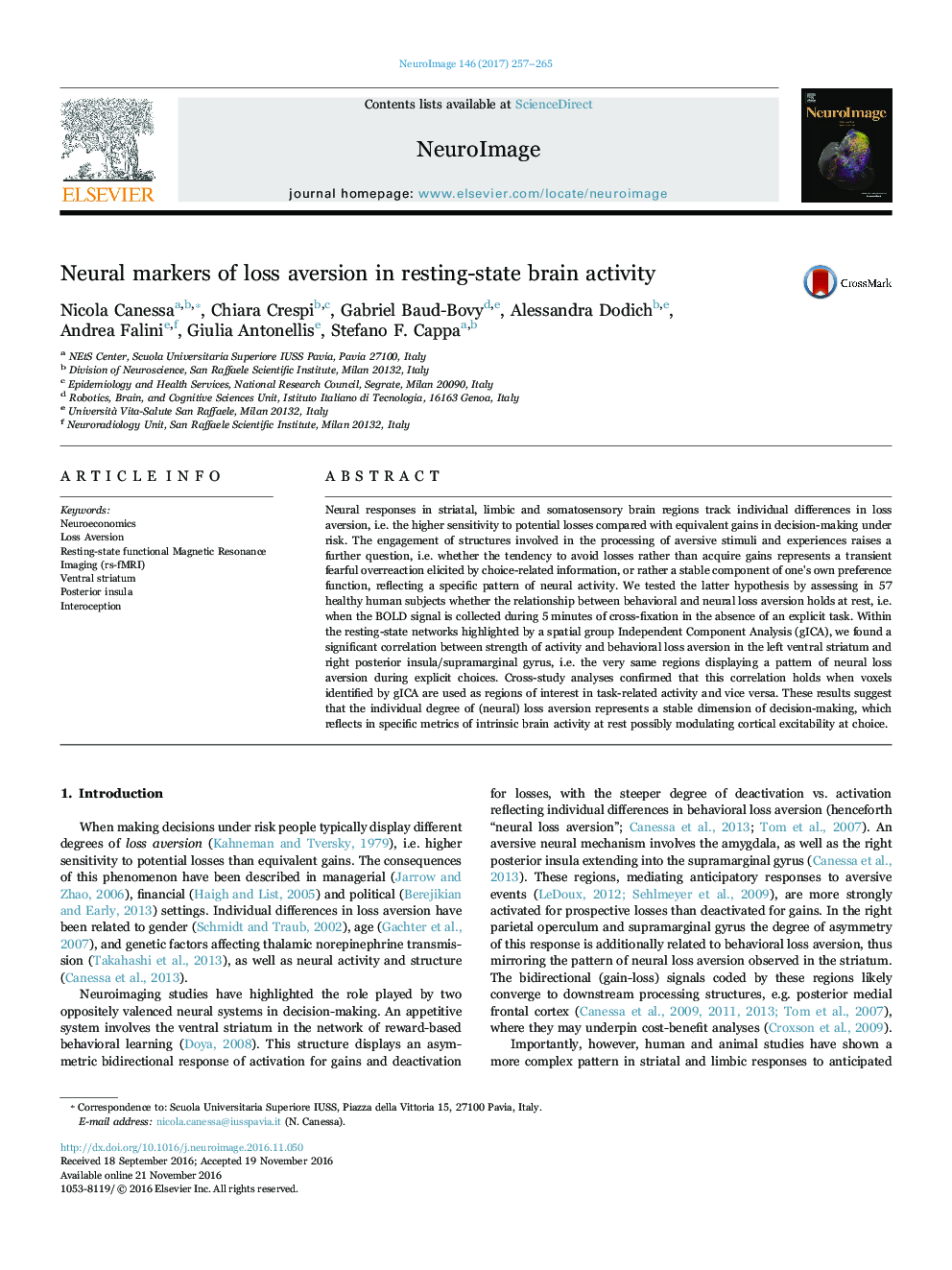| کد مقاله | کد نشریه | سال انتشار | مقاله انگلیسی | نسخه تمام متن |
|---|---|---|---|---|
| 5631336 | 1580864 | 2017 | 9 صفحه PDF | دانلود رایگان |
- Loss aversion correlates with striatal and insular intrinsic brain activity.
- Striatal and insular intrinsic brain activity predicts the degree of loss aversion.
- Neural loss aversion occurs in the voxels correlating with loss aversion at rest.
- Neural loss aversion is a stable feature of brain reward and interoceptive systems.
- Behavioral loss aversion likely represents a stable dimension of decision-making.
Neural responses in striatal, limbic and somatosensory brain regions track individual differences in loss aversion, i.e. the higher sensitivity to potential losses compared with equivalent gains in decision-making under risk. The engagement of structures involved in the processing of aversive stimuli and experiences raises a further question, i.e. whether the tendency to avoid losses rather than acquire gains represents a transient fearful overreaction elicited by choice-related information, or rather a stable component of one's own preference function, reflecting a specific pattern of neural activity. We tested the latter hypothesis by assessing in 57 healthy human subjects whether the relationship between behavioral and neural loss aversion holds at rest, i.e. when the BOLD signal is collected during 5Â minutes of cross-fixation in the absence of an explicit task. Within the resting-state networks highlighted by a spatial group Independent Component Analysis (gICA), we found a significant correlation between strength of activity and behavioral loss aversion in the left ventral striatum and right posterior insula/supramarginal gyrus, i.e. the very same regions displaying a pattern of neural loss aversion during explicit choices. Cross-study analyses confirmed that this correlation holds when voxels identified by gICA are used as regions of interest in task-related activity and vice versa. These results suggest that the individual degree of (neural) loss aversion represents a stable dimension of decision-making, which reflects in specific metrics of intrinsic brain activity at rest possibly modulating cortical excitability at choice.
Journal: NeuroImage - Volume 146, 1 February 2017, Pages 257-265
